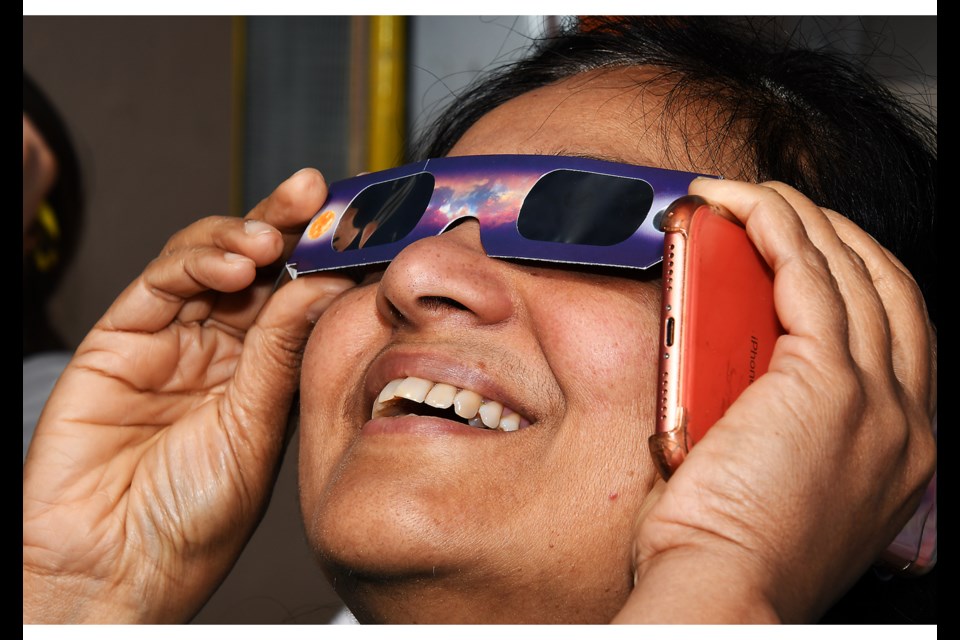There was no shortage of enthusiasm April 8 when at least 200 people of all ages trekked out to Turner Farm Park Observatory in Great Falls to view a solar eclipse.
Fairfax County Park Authority (FCPA) officials handed out cardboard-framed glasses with some seriously dark lenses that allowed the public to espy the eclipse safely. The lenses gave the sun a pleasingly warm hue as the moon passed in front of it.
The facility’s rolltop observatory offered three powerful telescopes to people who wended their way in a slow-moving line. One of the telescopes was aimed at Venus, but the other two were pointed at the sun, which looked pure-white through their optics.
Some attendees lay on the grass to watch the eclipse, while others did so from lawn chairs or while standing.
Several children sketched out galaxies and supernovas on a nearby concrete pad using thick sticks of pastel-colored chalk.
Sunspotter devices set up on a table projected the eclipse through a lens and reflected it onto white paper for easy, safe viewing.
Great Falls resident Susan Duda watched a demonstration of a Sunspotter, which resembled a cross between a wooden sextant and a microscope. Her grandson, Jax Jester, 5, of McLean, preferred not to have anything but protective eyewear between him and the eclipse.
“He’s anxious for us to put the glasses back on and not miss any part of this,” Duda said.
The Washington region, not within the path of totality, got to see only a partial eclipse of about 89 percent. The light became more diffuse and somewhat dimmer, but it was not the day-turned-into-night experience seen in communities from Texas to Vermont.
A similar eclipse will not happen in the United States for another 20 years.
Sebastian Arnez, FCPA’s lead observatory educator at the Turner Farm site, did his best to explain to a novice how astronomers calculated the eclipse’s path so precisely.
“When you’re doing orbital mechanics, there are a lot of planes to take into account,” he said. “The moon has its own plane and there’s different planes of the solar system and the sun. That’s how we get different angles.”



